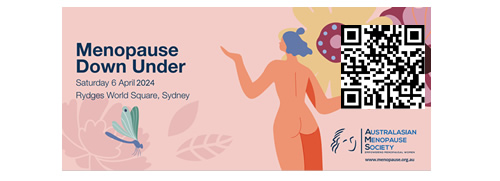Large-scale study confirms association may be partially mediated by body mass index
Diabetes is a global health concern expected to affect 693 million people worldwide by 2045. It's been well documented how diet and exercise influence risk of type 2 diabetes; however, a new study suggests that early menarche also is associated with a higher risk, but body mass index (BMI) may mediate this association. Study results are published online today in Menopause, the journal of The North American Menopause Society (NAMS).
Type 2 diabetes mellitus has become one of the most common diseases worldwide. In 2015, it affected nearly 8.8% of people aged 20 to 79 globally, and by 2040, it is expected to affect 10.4%. With so many people affected, it is not surprising how much research has been devoted to identifying determinants of the disease in order to prevent its development. Various lifestyle and environmental factors have already been confirmed, but there is also growing evidence pointing to some physiologic factors.
A new study analyzing more than 15,000 postmenopausal women in China has found that women who begin menstruating at an earlier age have a higher risk of developing type 2 diabetes. More specifically, each year of delay in menarche age correlated with a 6% lower risk of type 2 diabetes.
Although this is not the first study to suggest the association between menarche and diabetes, it provides added evidence regarding the increased risk, as well as the fact that BMI can partially mediate the association and the proportion of that effect is 28%.
Abstract
OBJECTIVE:
The aim of the study was to determine if early menarche is associated with an increased risk of type 2 diabetes mellitus (T2DM) in rural Chinese women and to estimate the proportion that can be attributed to adiposity.
METHODS:
A total of 15,346 postmenopausal women were enrolled in this study. Logistic regression and restricted cubic spline analysis were performed to estimate the relationship between age at menarche and T2DM. Mediation analysis was used to investigate whether the association was mediated by body mass index (BMI).
RESULTS:
After adjusting for multiple confounders, the early menarche group (≤14 y) had a higher risk of T2DM (odds ratio [OR] = 1.21; 95% CI = 1.06-1.38; P = 0.004) compared with the reference group (16-17 y), whereas the late onset group (≥19 y) had a lower risk of T2DM (OR = 0.78; 95% CI = 0.66-0.92; P = 0.003). BMI partially mediated the association between age at menarche and T2DM, and the proportion of the effect was 28%.
CONCLUSIONS:
Early menarche increases the risk of T2DM, whereas later menarche decreases the risk. The association seems to be partially mediated by BMI.
Reference
Early menarche is associated with an increased risk of type 2 diabetes in rural Chinese women and is partially mediated by BMI: the Henan Rural Cohort Study. Zhang L, Li Y, Wang C, Mao Z, Zhou W, Tian Z, Dong X, Zhang H, Yang X, Fan M, Li L. Menopause. 2019 Jul 29. doi: 10.1097/GME.0000000000001385. [Epub ahead of print]
Content created July 2019






